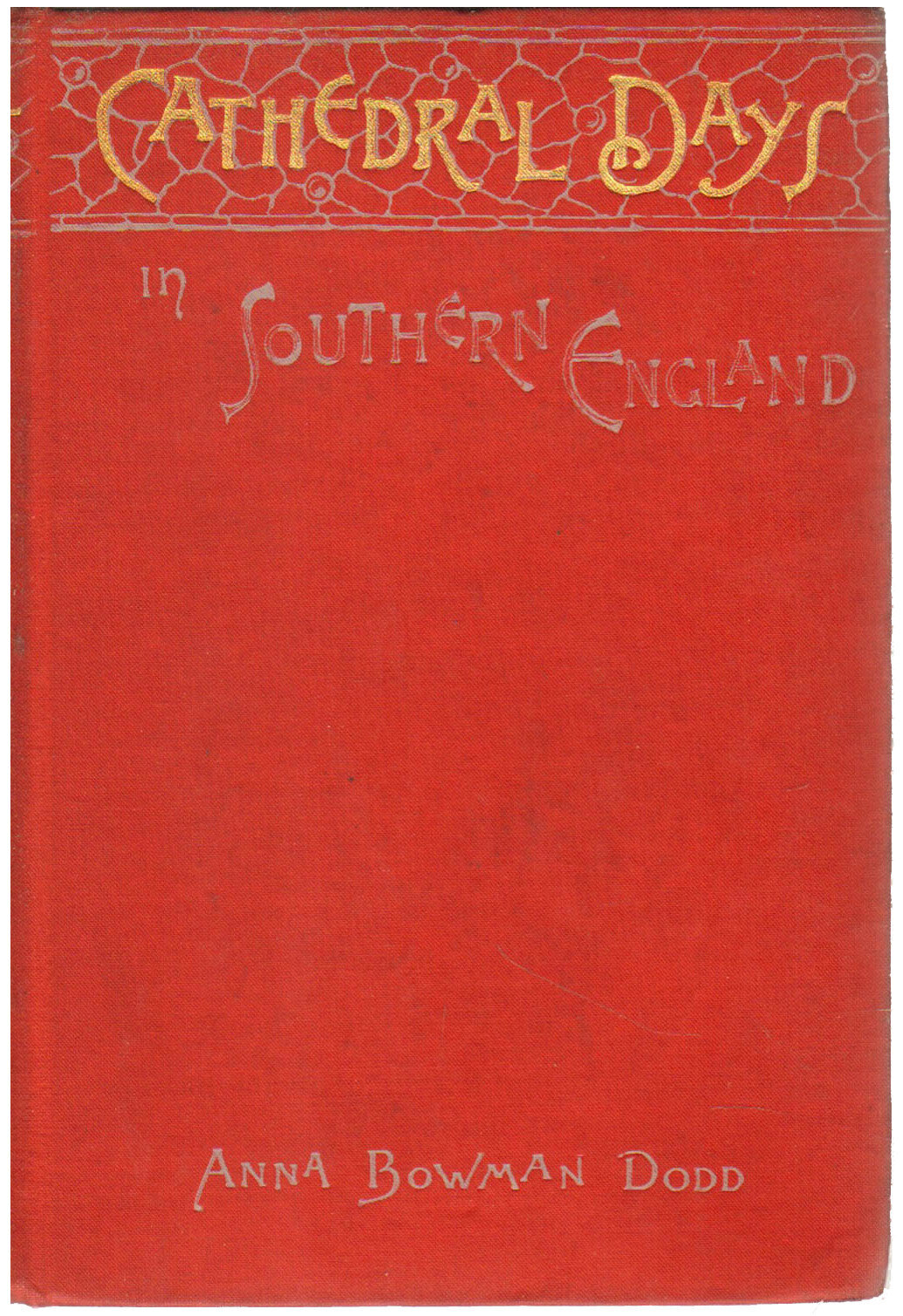THE NEW CRITERION, June 2020
On Anna Bowman Dodd and The Republic of the Future.
John Singer Sargent could trace out subjects who were larger than life and as illustrious as his brush. He drew the brilliance of the brilliant. “John Singer Sargent: Portraits in Charcoal,” the exhibition that was on view last fall at New York’s Morgan Library, reviewed in these pages in December by Mario Naves, was a Who’s Who of Sargent’s bright new century. As the artist turned from paint to pencil, a glittering gallery of famous figures looked out across the threshold of the twentieth century in the light of renewed confidence. Ethel Barrymore, Gertrude Vanderbilt Whitney, Henry James, Lady Diana Cooper, and William Butler Yeats were among those illuminated by Sargent’s dashing strokes.
Even a century on, many of his subjects remain household names—or, in our amnestic age, at least they remain names known by certain households. Yet, even by these standards, there were a few faces here that called out for rediscovery. You can be sure that those subjects who have slipped from our collective memory have done so through our failings rather than any fault of their own. Sargent was a far better talent scout than our culture would permit today.
One figure who dared us to look back was Anna Bowman Dodd (1855/8–1929). Her appearance was anything but flamboyant, especially compared to many of Sargent’s more theatrical bright young things. But get close to her portrait completed around 1900, most likely drawn at a time when both the artist and the sitter were living in Paris, and this middle-aged doyenne with eyebrow raised and lips curled seems to suggest she knows something we do not. Just what she knows is the question: we have to be led into her secret. The answer, as it turns out, is that she could see the future.
John Singer Sargent, Portrait of Anna Bowman Dodd, ca. 1900, Charcoal on paper, American Academy of Arts and Letters, New York.
I am certain there are some readers out there who know of Dodd and perhaps even know her well. She might just have an underground following. But if Dodd is as new to you as she is to me, I would not be surprised. Although a prolific writer with over a dozen books to her name and an extensive career writing dispatches for journals and magazines, Dodd has so far eluded retrospective attention. Today there are no books in print about her, just as there are no books in print by her, or at least from what I could find. This fact may be all the more surprising given our supposed interest in “marginalized” voices. As a lady writer in a gilded man’s world, Dodd would seem to be a ready subject for revival. Given what she wrote, I imagine she just landed on the wrong side of history.
The majority of Dodd’s published works, and her best, were travelogues. Born in upper-class Brooklyn as Anna Bowman Blake—whether in 1855 or 1858 is disputed—Dodd traveled extensively from a young age. Her marriage to Edward Williams Dodd, of Boston, only advanced her worldly peregrinations. Along the way she developed an ear for language and an eye for color that still enliven her travel writing today.
Since Dodd’s body of writing is out of copyright, in the age of the Internet several of her books now make reappearances as online scans, complete with markings from the Harvard, Stanford, and New York Public Libraries, from where these books were photocopied. I located ten of them online with little effort.
The antique typesetting and illustrations give these books an extra transporting power. Cathedral Days, of 1888, tours the hamlets of southern England. In and Out of Three Normandy Inns, of 1892, takes us through her stays in Villerville, Dives, and Mont-Saint-Michel. On the Broads, of 1896, follows the yachting season “between the sea-beaches of Yarmouth and Lowestoft, the grain-fields of Wroxham, and the crowded river-wharves of Norwich.” Falaise: The Town of the Conqueror, of 1900, places us in one of those “minor towns” that “have been centres of great movements,” where “feudalism and chivalry, English and French arms, Catholicism and Protestantism each in turn struggled for that supremacy which was to make or mar human progress.” In the Palaces of the Sultan, of 1903, was occasioned by the diplomatic reception of General Horace Porter, the United States ambassador to France, by the Ottoman court of Abdul Hamid II.
These many accomplishments are made all the more remarkable by the early book that both framed Dodd’s career and sealed her reputation. In one sense, The Republic of the Future, or, Socialism a Reality, of 1887, published when Dodd was around thirty years old, is another travelogue. The short fictional work, set in epistolary form, draws on Dodd’s same powers of observation. There is also little action here, as the brief narrative is driven by the traveler’s descriptive force rather than any twists of plot. And yet, this book’s dystopian vision of “New York Socialistic City” in the year 2050, which returns this travel writer to her hometown after anarchists have leveled the old city to the ground, conveys one of the more prescient understandings of how the theories of the nineteenth century would manifest themselves in the years to follow.
The title page of The Republic of the Future (1887) by Anna Bowman Dodd.
The Republic of the Future contains the letters of Wolfgang, a “Swedish Nobleman,” writing to Hannevig, his “Friend in Christiania,” as he travels to New York over the course of a future December. Journeying beneath the Atlantic by pneumatic tube—in a passage that reveals Dodd’s descriptive abilities—this tourist first encounters the “armies of fishes, beautiful to behold in such masses, shimmering in their opalescent armor as they rose above, or sank out of sight into the depths below.” Still, all is not right in this kingdom of the deep, due to the
wholesale cannibalism going on among the finny tribes, a cannibalism which still exists, in spite of the persistent and unwearying exertions of the numerous Societies for the Prevention of Cruelty among Cetacea and Crustacea. We passed any number of small boats darting in and out among the porpoises, dolphins and smaller fish, delivering supplies (of proper Christian food) and punishing offenders. A sub-marine missionary, who chanced to sit next to me, told me that of all vertebrate or invertebrate animals, the fish is the least amenable to reformatory discipline; fishes appear to have been born, he went on to say, without the most rudimentary form of the moral instinct, and, curiously enough, only nourish in proportion as they are allowed to act out their original degenerate nature.
The absurd notion of regulating the deep foreshadows the regulation of the heights as Wolfgang arrives in New York Socialistic City. Journeying by balloon to his hotel, he observes that the future city’s skyline is perfectly flat, with not even the occasional spire or chimney to offer variation: “It is as flat as your hand and as monotonous as a twice-told tale. Never was there such monotony or such dullness.” Anticipating the ideological conformity behind our brutalistic housing projects to come, “each house is precisely like its neighbor. Each house has so many rooms, so many windows, so many square feet of garden, which latter no one cultivates.” The reason is that “no man can have any finer house or better interior, or finer clothes than his neighbor. The abolition of poverty, and the raising of all classes to a common level of comfort and security, has resulted in the most deadening uniformity.”
The forced elimination of sex differences and gendered labor has been another priority of the revolutionaries. The future home no longer has a kitchen. Food is now delivered by culinary conduits, from centralized plants in Chicago, in bottles or in pellets. “The State scientists,” we learn, “now regulate all such matters.” The thought is, “If kitchens and cooking and long dinners hadn’t been abolished, the final emancipation of women could never have been accomplished. The perfecting of the woman movement was retarded for hundreds of years . . . by the slavish desire of women to please their husbands by dressing and cooking to suit them.”
As the socialist revolution took aim at the family, motherhood also came to be seen as the “chief cause of the degradation of women” and was “finally abolished by act of legislature.” Children are now raised and educated “under state direction.” Automation and the elimination of work and family have left a society where “both men and women are muscled like athletes, from their continual exercises and perpetual bathing”—one of the few ways they “murder time which appears to be slowly killing them.”
The end result of the elimination of nature’s inequities has not been liberation but rather a “profound melancholy which appears to have taken possession of this people.” Women “dress so exactly like the men in this country that it is somewhat difficult to tell the sexes apart.” There has been a “gradual decay of the erotic sentiment . . . due to the peculiar relations brought about by the emancipation of woman.” A man’s house has “ceased to be his home. There are no children there to greet him, his wife, who is his comrade, a man, a citizen like himself, is as rarely at home as he.” Woman, meanwhile, has “gained her independence at the expense of her strongest appeal to man, her power as mistress, wife and mother.” Beauty is shunned, just as the “aristocracy of intellect” has been eliminated by the exile of “scholars, authors, artists and scientists” and by “forbidding mental or artistic development being carried beyond a certain fixed standard, a standard attainable by all.”
In the pages to follow, some of it humorous, much of it grim, Wolfgang tours this future city. He talks with its citizens. He visits its “Ethical Temples” dedicated to the “nihilists, early anarchists, and socialists” whose portrait busts surround the statue of their saint, the utopian theorist Henry George. Wolfgang leaves New York Socialistic City unconvinced.
In attempting to make the people happy by insuring equality of goods and equal division of property, you have found it necessary to stultify ambition and to kill aspiration. Therefore a healthy, vigorous morale has ceased to exist. In making leisure a law you have robbed it of its sweetness.
“We are still chaotic, and unformed, and unredeemed, and unregenerate,” Wolfgang writes in comparison to Hannevig, “but we are tremendously alive.”
Published in an era of utopian literature and idealistic thinking, The Republic of theFuture established Dodd as one of the few voices of dissent over the doctrines of socialism, feminism, Georgism, and the many -isms to come. What unites these ideologies, as expressed in Dodd’s book, is the leveling and deadening effects of equality, enforced to perfection through ever greater degrees of coercion and unnatural control.
At the time of its publication, the smart set roundly rejected it. “The author is either ignorant of the writings of the best socialists, or has deliberately chosen the views of inferior men in order the more easily to ridicule them,” wrote Henry C. Adams in the magazine Science of August 19, 1887. “It is bright, in good style, and full of pleasing imagination; but for an argument it is too full of imagination.”
If only Dodd’s fictionalized imagination had not become fact through the brutalities of our real socialist states. Even in the free world, the militant impulse of equalizing “rights” through the elimination of liberties continues to define progressive thought and determine progressive policy. The Republic of the Future carried this impulse to its illogical, satirical, and devastating conclusions.
“If some of the ineradicable, indestructible principles in human nature could be changed as easily as laws are made and unmade,” writes Dodd, “the chances for an ideal realization of the happiness of mankind would be the more easily attained. But the Socialists committed the grave error of omitting to count some of these determining human laws into the sum of their calculations.” As a travel writer who deserves rediscovery, Dodd saw the world, including our own.














